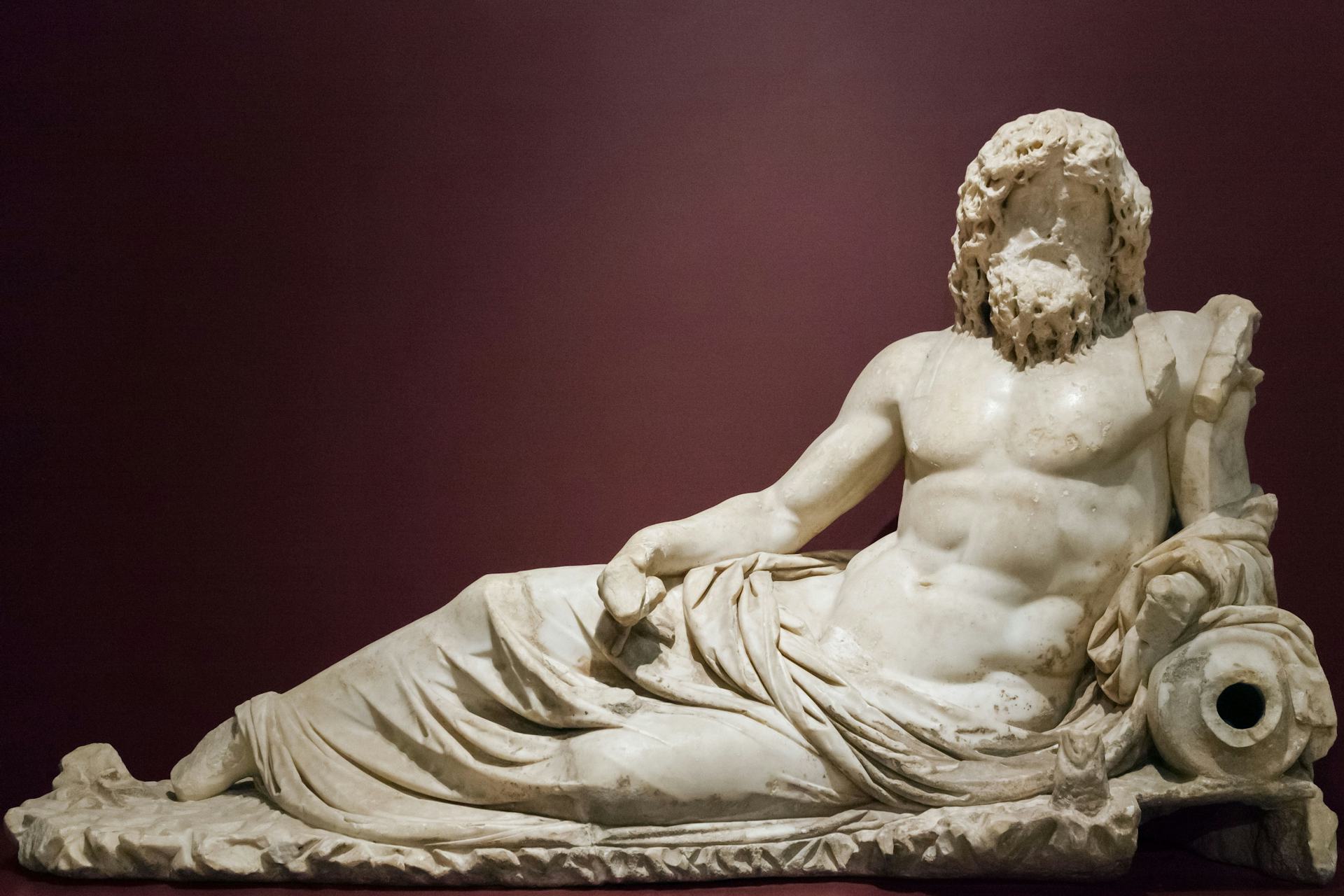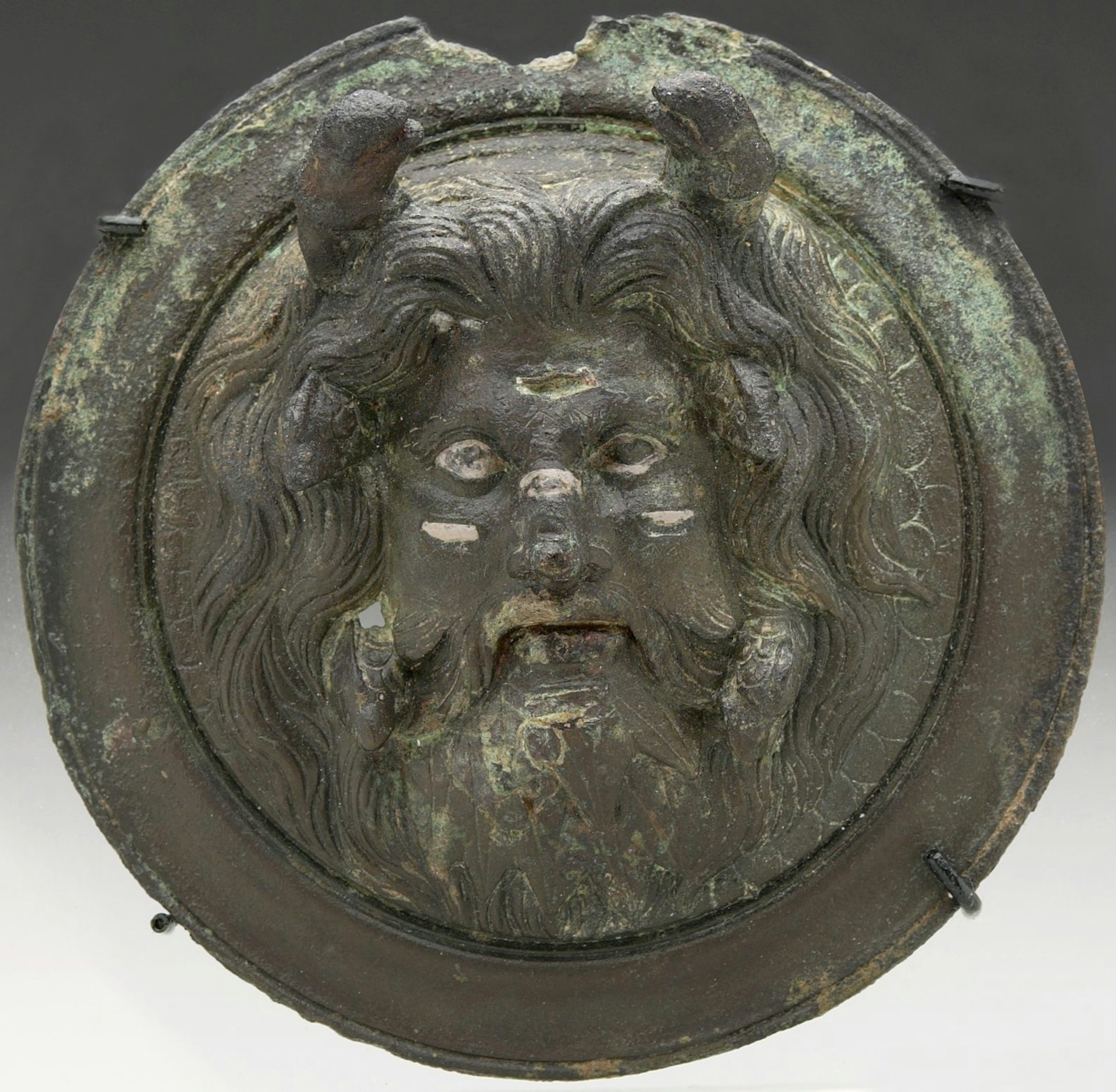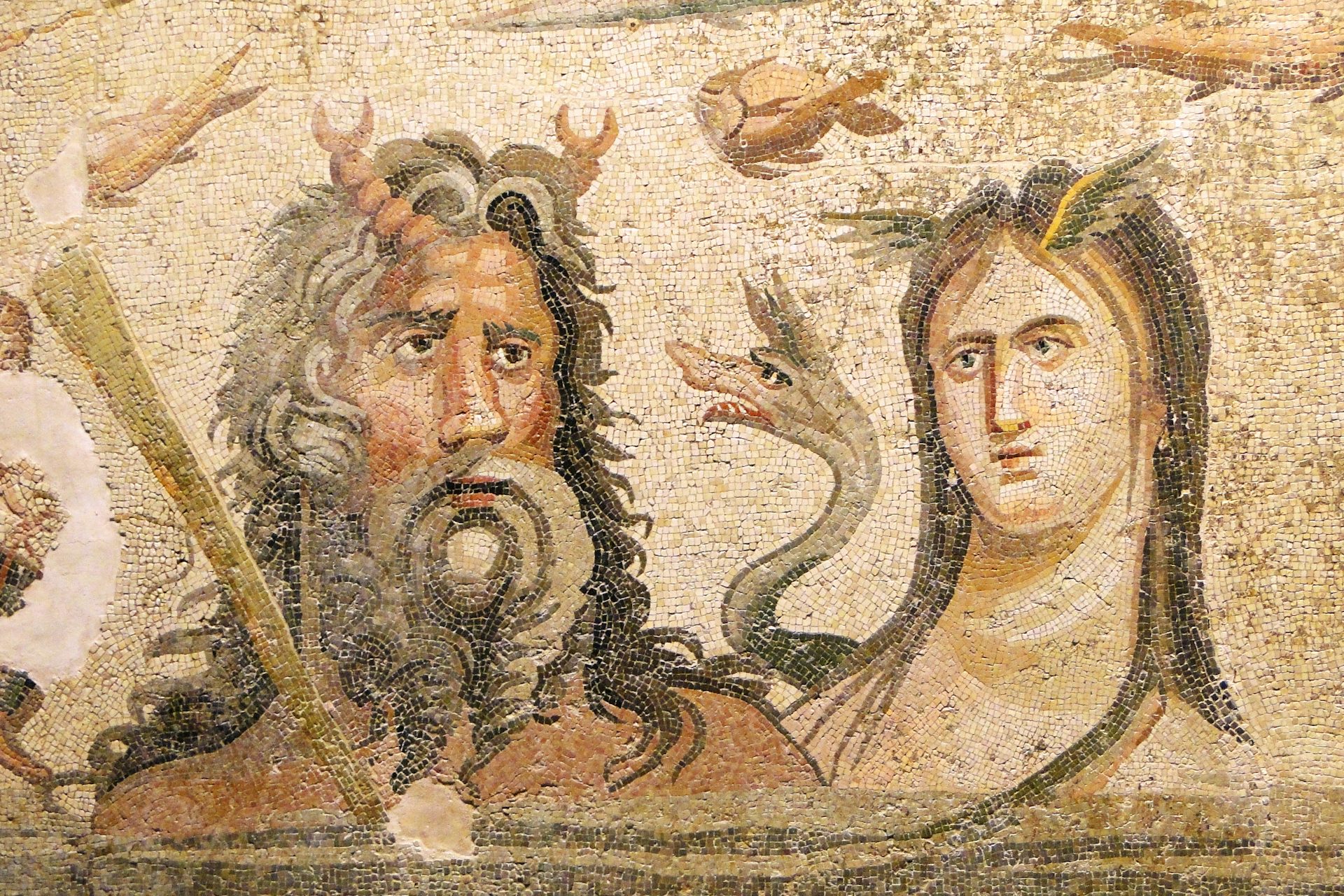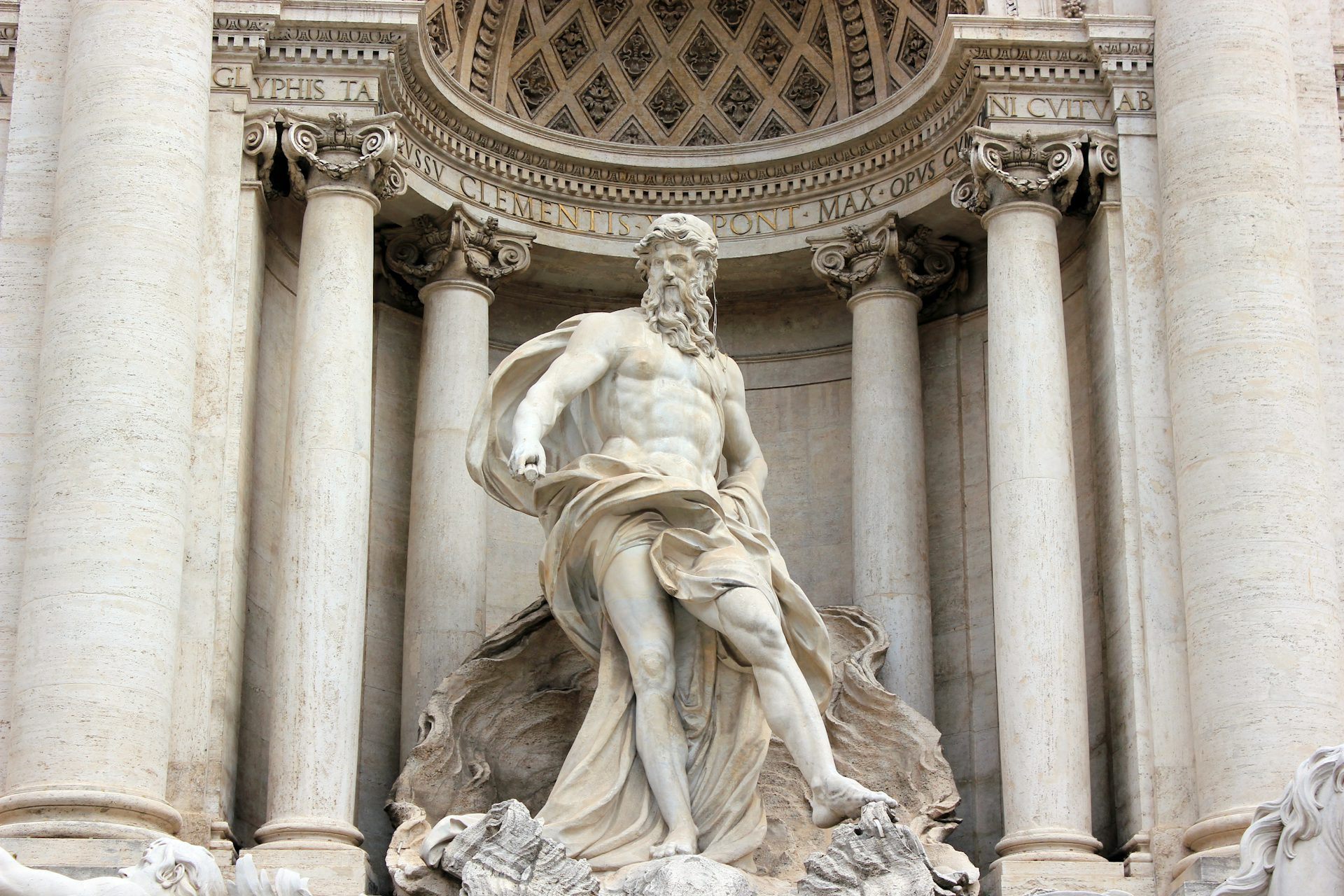Oceanus

Statue of Oceanus reclining, from Ephesus (ca. 2nd century CE). Istanbul Archaeological Museums, Istanbul, Turkey.
Eric GabaCC BY-SA 3.0Overview
The first son of Gaia and Uranus, Oceanus was a Titan who personified the great seas and oceans. He was often likened to a great river that spanned the entirety of the known world. With his sister and lover Tethys, Oceanus spawned the legions of sea nymphs known as the Oceanids.
Though not as popular as the Olympian deities, Oceanus was still well known throughout ancient Greece. He was mentioned in the Homeric epics, though his exact personality remained obscure. The ancient Greeks viewed Oceanus as a kind and benevolent deity; he was generally represented as an older male with a flowing beard that symbolized his fatherly authority.
Etymology
The name “Oceanus” (Greek Ὠκεανός, translit. Ōkeanos) is identical to the Greek word ōkeanos, meaning “great sea or river,” a reference to the body of water thought to encompass the world. The origins of the word are obscure, and possibly pre-Greek[1] or even Semitic.[2] The term may have been derived from the hypothetical Proto-Indo-European *ō-kei-m̥[h₁]no-, meaning “lying on.”[3] The Titan was often depicted in a reclining pose that mimicked his literal presence lying across the world.
Pronunciation
English
Greek
Oceanus Ὠκεανός Phonetic
IPA
[oh-SEE-uh-nuhs] /oʊˈsi ə nəs/
Attributes
Oceanus embodied the seas and commanded the enormous power of their waters. While he was occasionally viewed as a source of destruction, Oceanus was generally imagined as a father and giver of life. He was also viewed as a liminal deity—one who marked the boundary between the living and the dead, as well as the seas and heavens.
Though sometimes imagined as a person, Oceanus was also regarded as a place. In the earliest texts of Greek mythology—the Homeric and Hesiodic epics—Oceanus was a great river, described as world-encircling,[4] perfect,[5] and endlessly flowing back into itself.[6]
Since the days of Homer, Oceanus has been seen as the source of all seas, rivers, springs, and wells.[7] He was also closely associated with heavenly bodies. The sun and its corresponding deity Helios, for instance, departed from the Titan’s body in the morning and settled there at night. The stars, too, bathed in Oceanus.[8]
Oceanus (either the river itself or the palace of the Titan) was located near the ends of the earth, somewhere in the west—perhaps even in the vicinity of the Underworld. Homer puts Oceanus near Elysium,[9] while Hesiod locates him near Tartarus.[10] Beyond Oceanus lies the entrance to the Underworld,[11] the Isles of the Blessed,[12] and the Garden of the Hesperides.[13]
As Oceanus marked the boundaries of the civilized world, the early Greeks imagined that those who lived near his waters were strange, fantastical beings. These included human or human-esque tribes like the dark Ethiopians,[14] the tiny Pygmies,[15] and the Cimmerians,[16] as well as monsters like the Harpies,[17] the Gorgons,[18] or Geryon.[19] Odysseus sailed in Oceanus' great river during his wanderings, which ultimately took him as far east as Circe’s island of Aea and as far west as the Underworld.
Oceanus, together with his sister-wife Tethys, was often represented as the primordial source of the world; in the Iliad, for example, Hera says that it is Oceanus “from whom the gods are sprung.”[20] It is unclear whether this was meant literally—as an alternative to the cosmogony in which Gaia and Uranus were the originators of the world—or merely as a kind of figurative epithet.[21]
According to the Orphics, a religious group which stressed the importance of asceticism and ritual in attaining a blissful afterlife, Oceanus and Tethys were indeed the first divine couple, born a generation before the Titans.[22] Despite his cosmic significance, however, Oceanus remained subordinate to Zeus in traditional Greek religion and myth.
In art, Oceanus is often depicted with the features of both a man and a sea creature. He usually has a beard and sometimes sports horns or crab claws growing out of his head, with the body of a snake or fish. He shows up frequently on Roman coins, mosaics, and sarcophagi.

Roman bronze medallion (first century CE) showing the head of Oceanus, which is crowned with dolphins. Fish scales in the background further his reign as the ruler of the oceans and seas.
Minneapolis Institute of ArtPublic DomainFamily
The firstborn son of the primordial deities Gaia and Uranus, Oceanus had many siblings. These included the Titans Coeus, Crius, Hyperion, Iapetus, Thea, Themis, Mnemosyne, Phoebe and Rhea, Tethys, and Cronus—as well as the one-eyed Cyclopes and the Hecatoncheires, monsters with a hundred hands each.
Family Tree
Mythology
Oceanus acquired a reputation as a sort of pacifist among the blustering and belligerent Titans. According to the mythographer Apollodorus, Oceanus was the only Titan who did not participate in Cronus’ attack on their father, Uranus.[26] It was through this bloody struggle that the Titans became the rulers of the cosmos, with Cronus as their leader.
Later, when Zeus and his siblings fought against Cronus and the Titans in the decade-long Titanomachy, Oceanus again stood on the sidelines. In Hesiod’s Theogony, Oceanus actually sends his daughter Styx, one of the Oceanids, to help Zeus.[27] In Homer’s Iliad, Hera claims that during the war, she was taken in and brought up by Oceanus and Tethys.[28] Because of his support of the Olympians, Oceanus was not cast down into Tartarus with the other Titans after Zeus defeated Cronus and his army.

Mosaic of Oceanus and Tethys at the Zeugma Mosaic Museum in Turkey (second or third century CE).
Adam JonesCC BY-SA 2.0Though Oceanus typically kept his distance from mythological adventures, he did appear in one tale with Heracles. The sixth-century BCE writer Pherecydes related a story in which Heracles sailed to Erytheia, the home of the monster Geryon, in a golden cup given to him by Helios. During this voyage, Oceanus decided to tease Heracles by creating large waves to rock the cup. Unfazed, Heracles drew his bow and threatened to shoot Oceanus if he did not stop. Knowing Heracles’ reputation (and thus rightly fearing this threat), Oceanus immediately complied.[29]
Another myth explained why Ursa Major, the Great Bear, was the only star or constellation that did not bathe in the waters of Oceanus. Ursa Major had once been one of Zeus’ lovers, the nymph Callisto. When she died, she was placed in the sky as a constellation, but the ever-jealous Hera sought to further punish her husband’s lover: she ordered Oceanus not to let Ursa Major bathe with the other starts in his waters.[30]
Worship
Oceanus was almost never an object of cult in the ancient Greek world, though he was worshipped by Alexander the Great during his campaign for world conquest.[31]
Pop Culture
Oceanus was famously memorialized as the focal point of the Trevi Fountain in Rome. Designed in the mid-eighteenth century by the Italian architect Nicola Salvi and completed in 1762 by sculptor Guiseppe Pannini, the iconic landmark features a bearded Oceanus towering over geysers, horses, and sea nymphs. The fountain’s theme is “taming the waters,” and Oceanus’ commanding position makes it clear that the mighty Titan is the one doing the taming.

The statue of Oceanus at the center of the Trevi Fountain in Rome (1762).
Bonnie FerantePublic DomainDue to its etymological relationship to the word “ocean,” the Titan’s name is still strongly associated with the seas and its waters. In 2010, the National Oceanic and Atmospheric Administration (NOAA) launched a ship called the NOAAS Okeanos Explorer to gather data about the oceans and atmosphere.
Oceanus makes a brief appearance in the video game God of War III (2010), where—contrary to the typical tradition—he is one of several Titans to attack Mount Olympus.